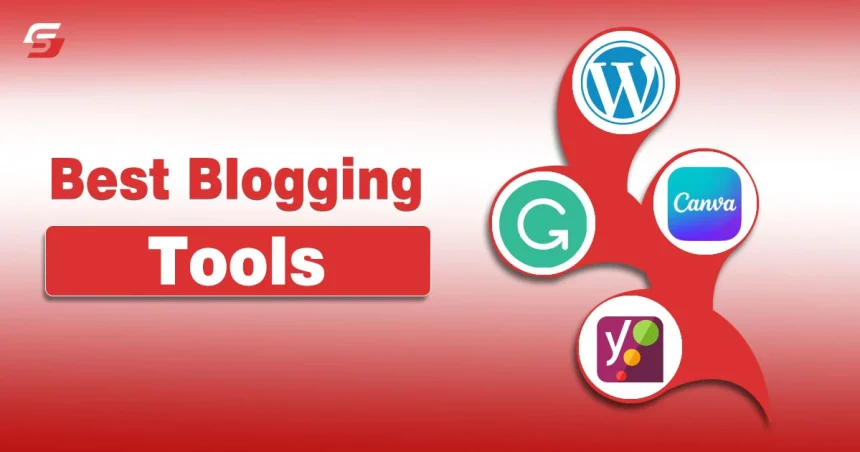Marketing competition is currently at its peak, making it challenging for newbies to make their mark in this competitive landscape. Blogging is also being severely impacted by this tremendous rise in the number of websites and blogs. The right blogging tools can save time, improve quality, and help your content reach the right audience. Sounds like magic, right? Well, it’s actually just smart planning.
Having the right tools is an immense advantage, as you can accomplish all the necessary tasks effortlessly. I have enlisted some of the best blogging tools every blogger must use in 2025 and beyond to find ultimate success.
What are Blogging Tools?
Blogging tools are online platforms or software that are designed specifically to help website owners or bloggers complete several vital tasks. Whether it is related to creating, managing, or optimizing the content, these tools can offer incredible functionalities and take the working experience to an advanced level.
Generally, the essential ones include content marketing tools, management tools, content creation and editing tools, and social media management tools. Above all, you can leverage the potential of analytics and monetization channels to diversify your content reach and pocket a massive sum by eliminating potential errors. Ultimately, you can have your hands on all the desired outcomes.
10 Best Blogging Tools in 2025
Throughout my blogging journey, I have been through many thicks and thins. Getting through such hardships was never easy.
In 2025, when there is a highly inflated marketing competition, you must work strategically and tactically to compete with top giants. Picking the top tools from such a diverse collection is never going to be easy for anyone. Therefore, I have enlisted the best blogging tools for beginners you should have.
1. Grammarly – Perfect Your Prose
Grammarly is an AI-powered platform that works more as a blog writing assistant. It is designed especially to eliminate grammar and punctuation mistakes and enhance the style and tone of the text.
As a result, it will enhance the context of communication. It offers real-time suggestions across various platforms, including web browsers, Microsoft Office, and mobile devices. Moreover, its algorithms analyze text for correctness, clarity, engagement, and delivery.
| Pros | Cons |
|---|---|
| Enhanced writing clarity | Limited in the free version |
| Real-time suggestions | |
| Diverse platform integration | |
| Advanced features available | |
| Tailored feedback for improvement |
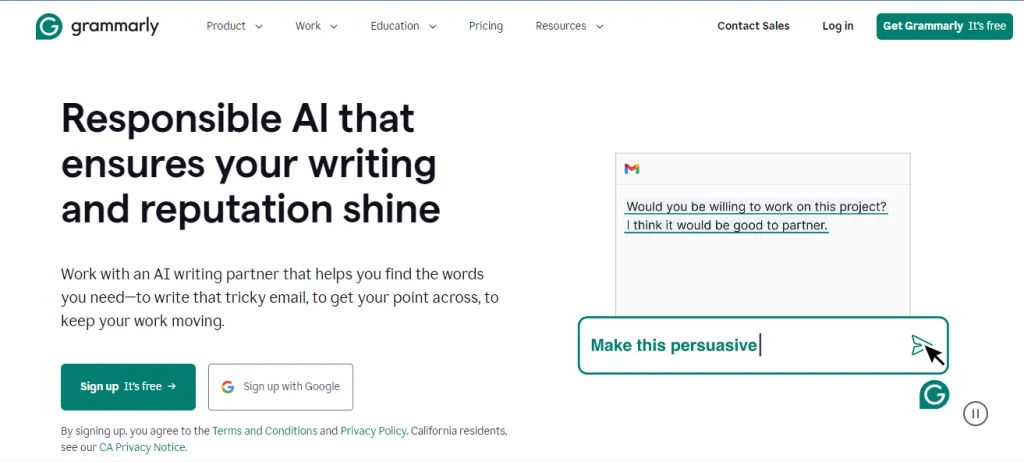
2. Canva – Design Delight
Canva is a graphic design tool that allows users to create images and graphics without having professional skills. It offers a collection of templates, images, and tools. Hence, everyone can create graphics for social media, presentations, marketing materials, and more quite effortlessly.
Above all, the drag-and-drop interface simplifies the design process and easily allows customization. You can use Canva to create the logos according to your blog name. In this way, you can maintain the consistency.
| Pros | Cons |
|---|---|
| Intuitive drag-and-drop interface | Expensive |
| Extensive template library | |
| Collaboration features available | |
| Versatile design options | |
| Free and premium versions |
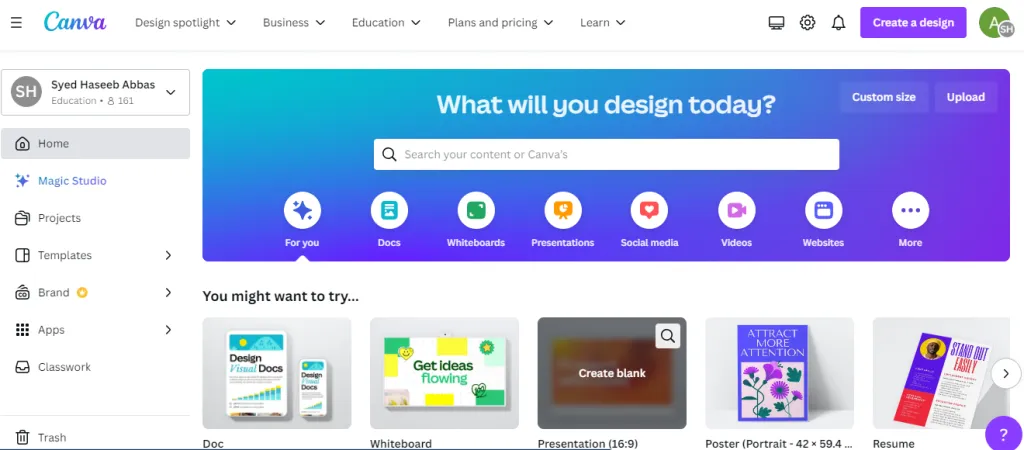
3. Unsplash – Inspire Visually
If you are using Canva and lacking photos for your blogs, then Unsplash might be worth it. There are millions of free and licensed images that you can use for blogs. As Unsplash is not considered a pure blogging tool, hence, its useability with a wide range of bloggers made it essential for our blogging tools list.
No matter, what is the niche of your blog! You can find all bulks of images from all categories free of cost. That is why, I have put it here for you. Besides these benefits, you can create visuals to promote your blog on social sites.
| Pros | Cons |
|---|---|
| Free to use photos | Generic images |
| Search by photo, collection, or user | Hidden collections |
| All devices supportive | |
| Multiple device connectivity | |
| Search by photo, collection or user |

4. Google Trends – Spot Top Trends
Google Trends is a valuable tool for bloggers, with insights about trending search queries and topics. Through this bloggers can identify popular content ideas, and plan seasonal posts. In this way, you can enhance SEO by targeting relevant keywords.
Bloggers can stay relevant and create engaging content by making use of Google Trends. However, it should be used with other tools and strategies to avoid common blogging mistakes and get the most accurate and actionable insights.
| Pros | Cons |
|---|---|
| Market research | Do not possess advanced features |
| Identify trending topics | |
| Trend variation by location | |
| Brand comparison analysis | |
| Discover hidden gems |
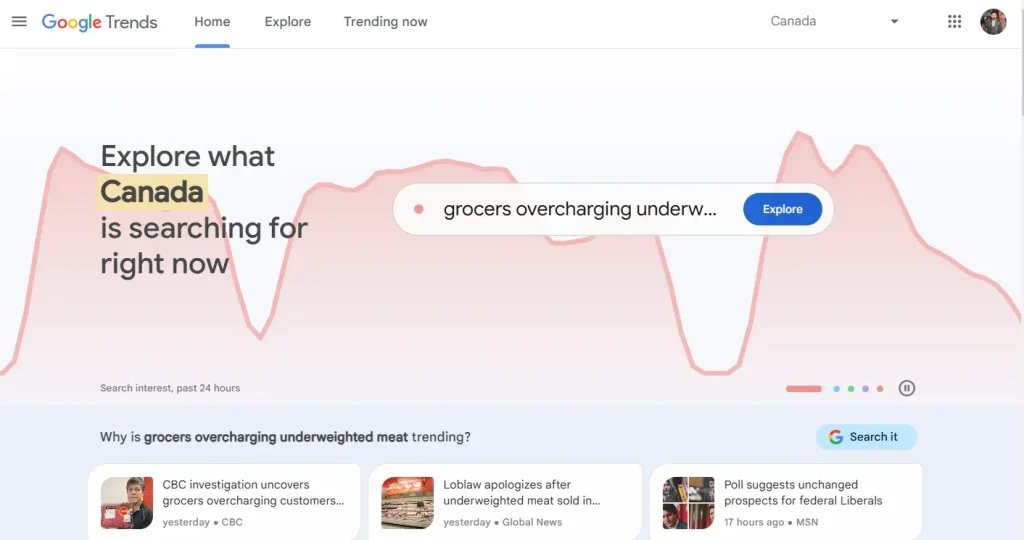
5. WordPress – Build Beautifully
WordPress is the most widely used open-source content management system, and it has gained immense popularity for its versatile nature and user-friendly interface. It enables users to create and manage sites ranging from complex e-commerce platforms to simple blogs. Moreover, it offers many themes and plugins with extensive customization options for a unique approach.
Plugins are also available to enhance the functionality of the WordPress blog. The support associated with WordPress makes it one of the most accessible blogging tools for beginners and developers alike.
| Pros | Cons |
|---|---|
| Extensive customization options are available | Vulnerable to security threats |
| Large selection of plugins | |
| User-friendly interface | |
| Scalability for growth | |
| Active community support |
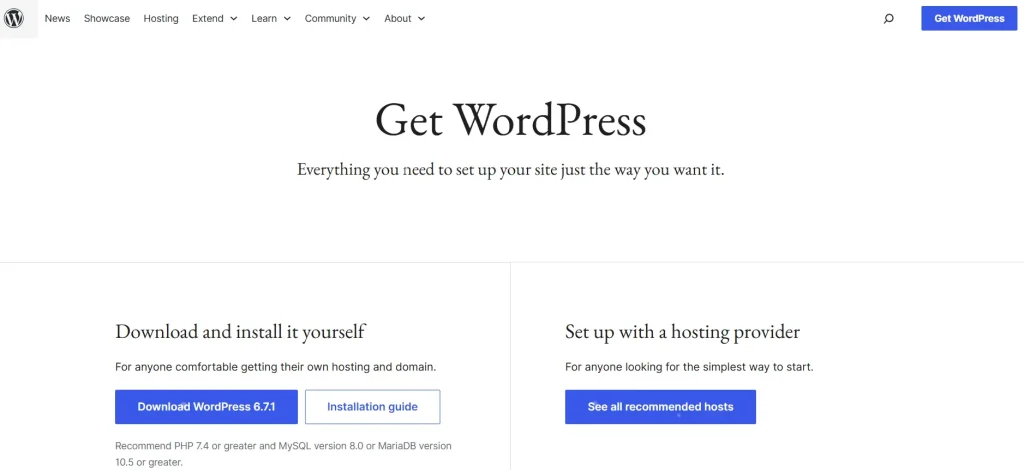
6. Ahrefs – Get Your SEO Right
Ahrefs is a comprehensive SEO platform with several built-in tools to allow bloggers to improve their online visibility by identifying potential issues and working strategically to eliminate them. In addition, it provides valuable insights about the tactics followed by your competitors during keyword research and content creation.
Hence, you can follow the trends for the ultimate results. Ahrefs offers an extensive dataset about the backlinks along with indexed pages to generate actionable data for site optimization.
| Pros | Cons |
|---|---|
| Extensive SEO toolkit | Relatively high subscription cost |
| Detailed backlink analysis | |
| Comprehensive keyword research | |
| User-friendly interface | |
| Regularly updated database |
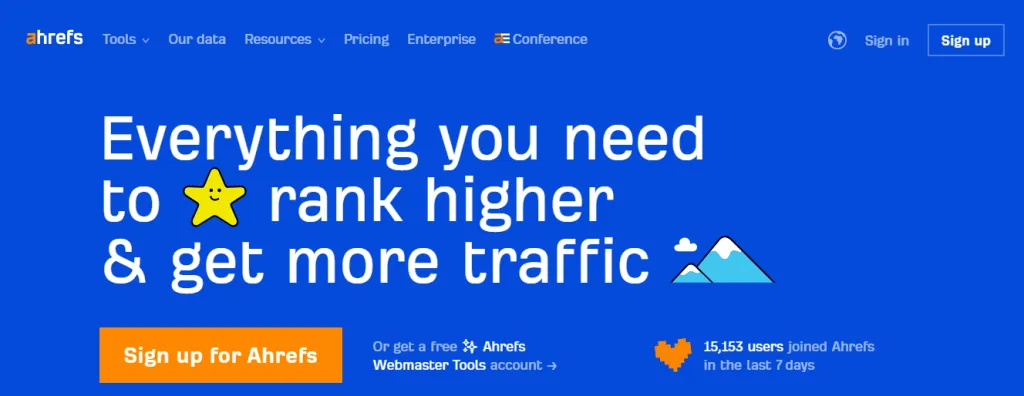
7. Google Search Console – Optimize Your Reach
Google Search Console is a powerful tool for checking website’s visibility and performance on Google Search. It provides valuable insights into how your site is performing, including data on search traffic, keyword rankings, and user behavior.
Bloggers can identify and fix technical issues, submit sitemaps, and monitor their site’s index coverage by using Search Console. It ensures that Google has the most up-to-date view of your content.
| Pros | Cons |
|---|---|
| Search traffic and performance | |
| Allows submission of sitemaps | |
| Alerts for issues detected by Google | |
| Mobile usability enhancement | |
| Manages all backlinks |
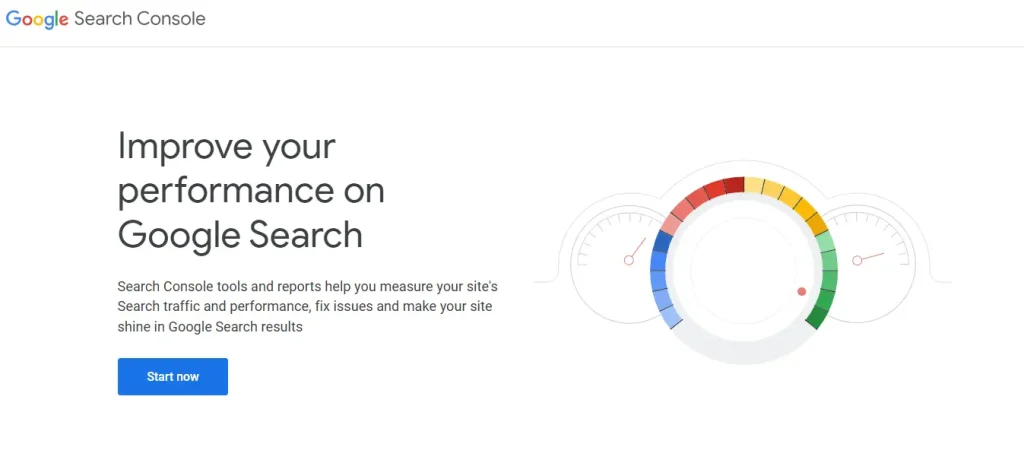
8. Hemingway – Clearer Writing
Hemingway is another one of the best blogging tools for bloggers in 2025. It is generally used to improve clarity and readability by highlighting complex sentences. Above all, it delivers insights into other potential issues such as passive voice, adverbs, and sentence errors. Hence, it lets users create concise and impactful content that is easy for search engines and the general audience to understand.
The simplified interface offers a distraction-free editing experience, enhancing the focus on the content. Ultimately, bloggers can modify the articles according to the preferences and needs of the users.
| Pros | Cons |
|---|---|
| Enhances readability and clarity | May oversimplify nuanced writing |
| Identifies complex sentences | |
| Highlights passive voice | |
| Minimalist distraction-free interface | |
| Available as a web and desktop app |
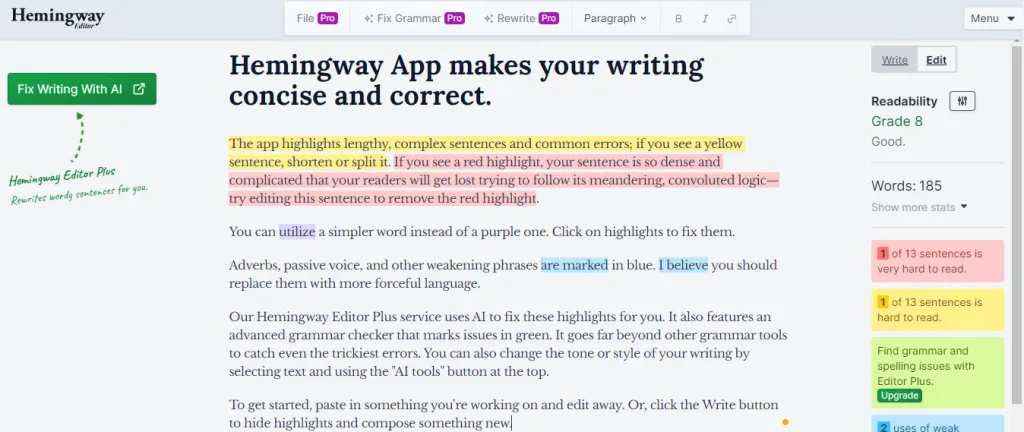
9. Yoast SEO – Optimize Content
The next blogging tool every blogger must own in 2025 is a WordPress plugin called Yoast SEO. Its main functionality is to optimize the website or blog according to search engines and enhance their rankings. It offers an extensive range of options, including content analysis, XML sitemap generation, meta tag customization, and readability checks.
Furthermore, Yoast SEO has its role in delivering the guidelines for best on-page SEO practices by giving insights into the readability and keyword density of the content.
| Pros | Cons |
|---|---|
| Content analysis for SEO | Overemphasis on keyword density |
| Readability checks for clarity | |
| XML sitemap generation | |
| User-friendly interface | |
| Ongoing updates and support |
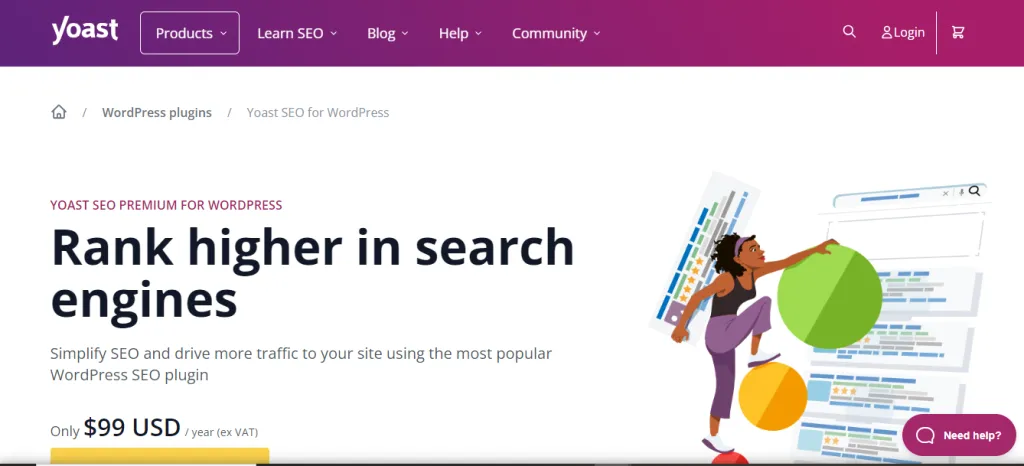
10. Buffer – Social Media Manager
Buffer is a social media automation tool for saving plenty of time and helping you draft and schedule posts on multiple social media platforms in advance. The platforms come with multiple features that are aimed to get better productivity in less time.
In any part of the day, keeping in view the coming workload, bloggers can schedule their posts in a streamlined way. Publishing, analytics, and engagement are the major three featured groups of Buffer.
| Pros | Cons |
|---|---|
| Free version | Lack of advanced features in free mode |
| Detailed analytics | No monitoring tools |
| Smooth scheduling | |
| Unlimted user on Pro Plan |
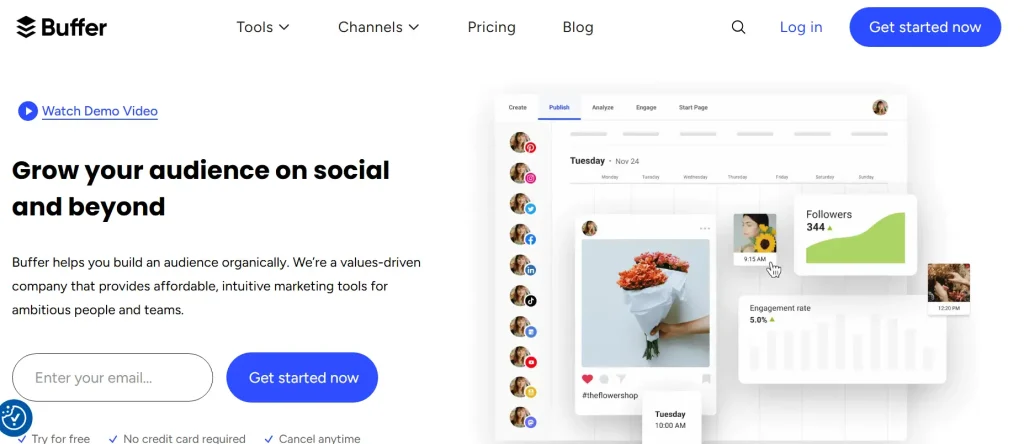
Winding Up
The blogging tools mentioned in this blog post can help you stay ahead of the competition by enabling you to accomplish all the essential tasks. Technological advancements have enabled companies to integrate more unique features in these tools, enhancing their functionalities to deliver incredible outcomes to bloggers.
A large number of options have been developed and launched in the market in recent years. However, you must understand their features and pick the right set according to your requirements and preferences. It will not only improve your productivity but also streamline your workflow.


